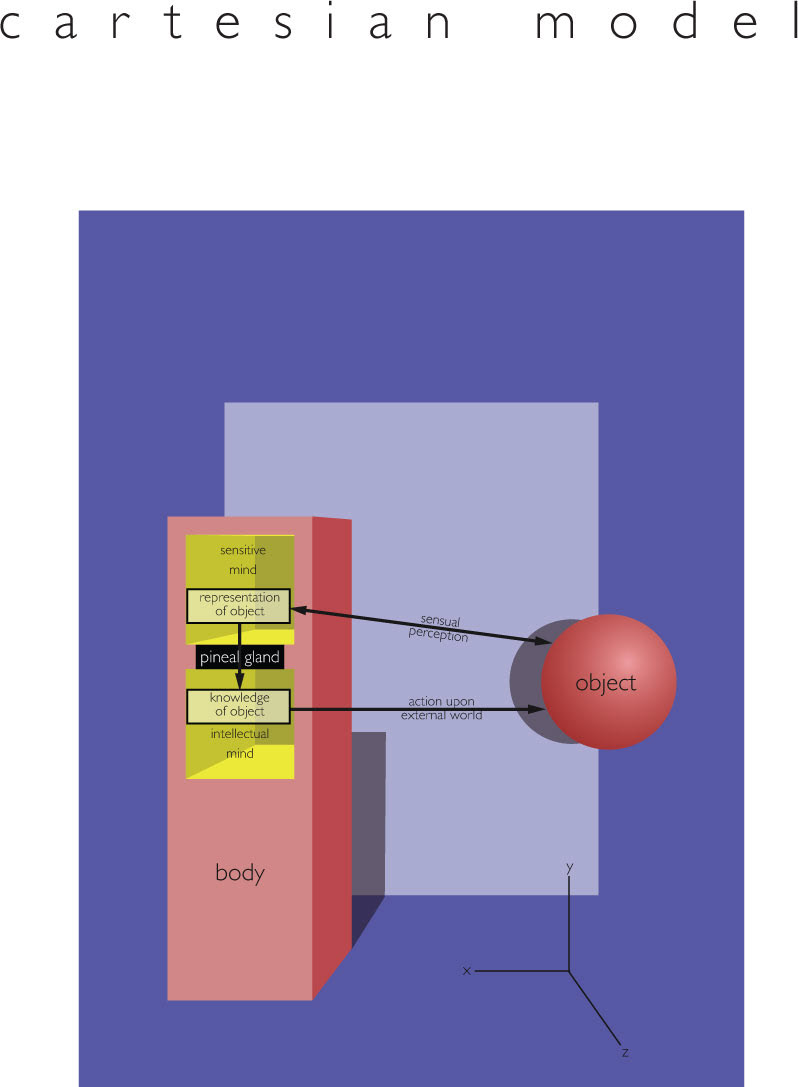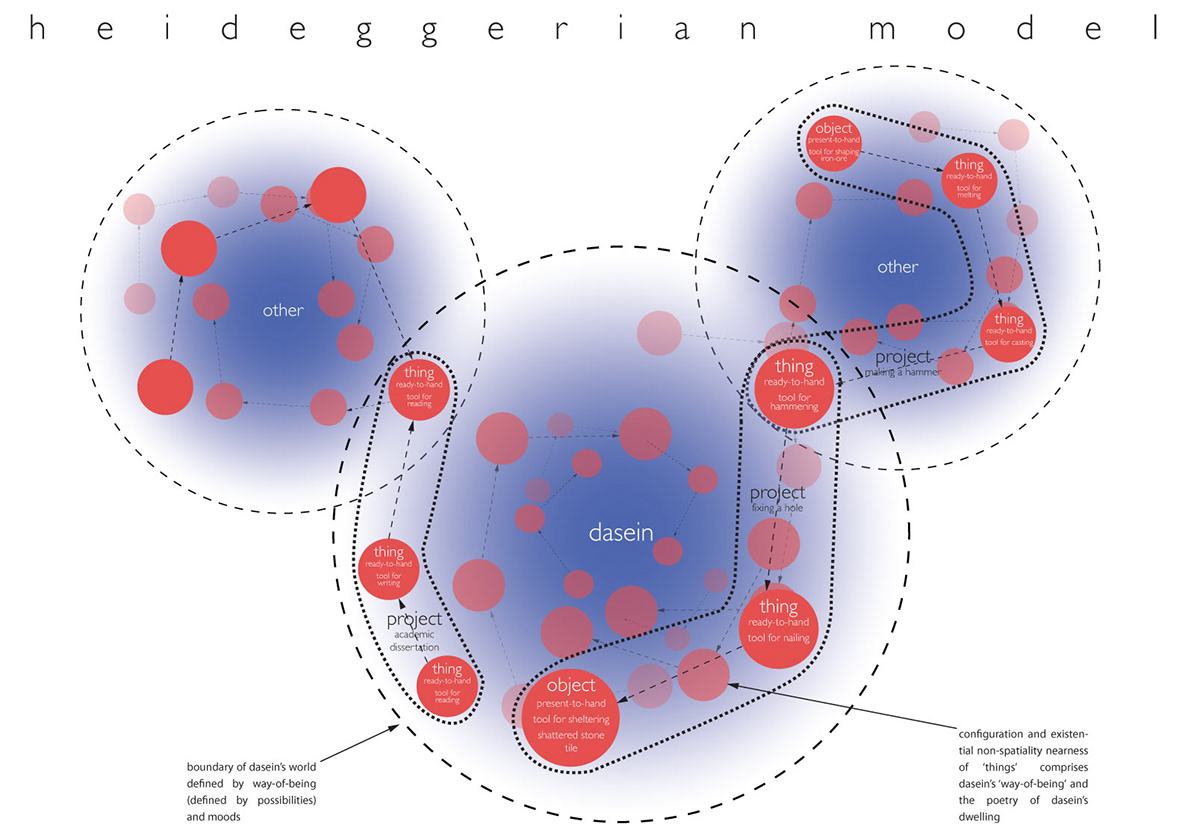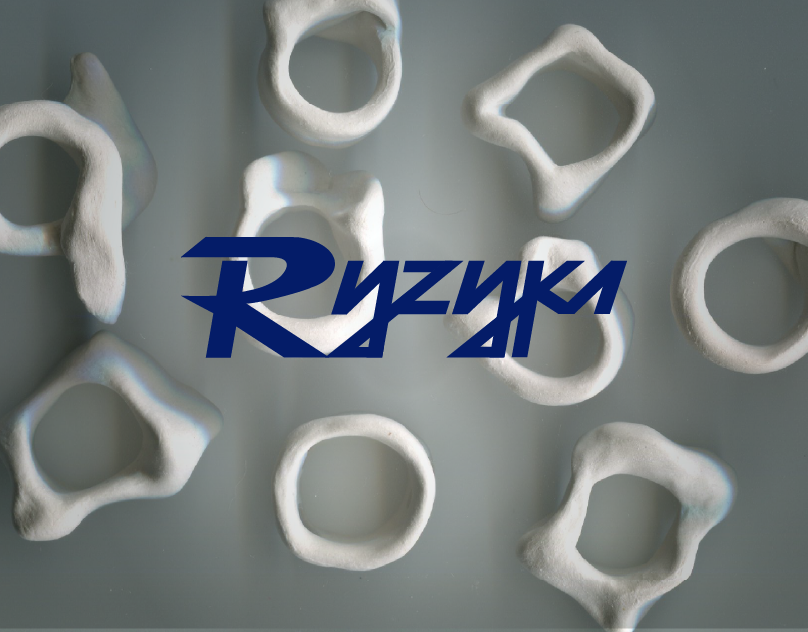The Destruction of Architecture
There isalways a struggle to define what architects do and therefore define whatarchitecture is. The products of architecture can appear to be as wide rangingas the practitioners themselves. Physically, the products themselves varygreatly, from the formulation of a single building, the structuring of a plaza,or grouping of buildings, to the layout of an entire city quarter. No matterwhat the guiding principles are for a project, the primary concern remains constant throughout, that architecture is created by people. The execution of architecture is therefore a social action. The question ‘what is architecture’ then becomes a question about physiology, physics and how architecture exists in both.
This dissertation will investigate the execution of architecture as a social actionby examining the philosophical tradition of scrutinising the meaning of being through an examination of the mind, the body and space. This raises questions regarding the interface between the mind, the world it is in and other mindsestablishing a model of a homogenous society comprised of individuals. Philosopher Calvin Schrag described this as “navigating a passage between the Scylla of hegemonic universality and the Charybdis of relativistic constructs.” This dissertation will argue that this problem lies at the heart of the placearchitects are in, particularly when designing in the public realm. This thinking led to the question ‘how can the architect believe that a design can ever be suitable for a society of individual beings who subscribe to a widerange of social constructs?’
How can agreater understanding of human cognition and the implications this has for ourunderstanding of architecture allow us to better understand architecture as afitting part of social action?
This is the primary focus of the dissertation. To answer this question, a history of ‘theories of the mind’ will be explained to reveal why we think of the mind inthe way we do, and what contemporary attitudes are to the topic of human cognition. Part One will consider three thinkers whose work has had a dramatic impact on these issues. The first, philosopher René Descartes (1596 to 1650),whose philosophy has shaped contemporary ‘common sense’ with regards to themind, the second, philosopher Martin Heidegger (1889 to 1976), who reconsidered Descartes’ work, redefining the question, and the third, neuroscientist António Damásio (1944 to present), whose work bridges the perceived disciplinary gap between science and philosophy along with the perceived ontological gap between mind and body, further challenging the work of Descartes. The concept of ‘social action’ will then be addressed taking into account these fresh models of human understanding.
Part Two will address architecture directly, considering it against the backdrop of the newly formed model of human cognition, drawing parallels between it and language whilst also further refining what is understood regarding notions of cognition and the mind.
During the course of this investigation I strove to make these extremely complex issues as simple to understand as possible. I therefore created a series of diagrams as a means of a summary, initially for myself but then also as an aid to general understanding. These diagrams can be seen below.
There isalways a struggle to define what architects do and therefore define whatarchitecture is. The products of architecture can appear to be as wide rangingas the practitioners themselves. Physically, the products themselves varygreatly, from the formulation of a single building, the structuring of a plaza,or grouping of buildings, to the layout of an entire city quarter. No matterwhat the guiding principles are for a project, the primary concern remains constant throughout, that architecture is created by people. The execution of architecture is therefore a social action. The question ‘what is architecture’ then becomes a question about physiology, physics and how architecture exists in both.
This dissertation will investigate the execution of architecture as a social actionby examining the philosophical tradition of scrutinising the meaning of being through an examination of the mind, the body and space. This raises questions regarding the interface between the mind, the world it is in and other mindsestablishing a model of a homogenous society comprised of individuals. Philosopher Calvin Schrag described this as “navigating a passage between the Scylla of hegemonic universality and the Charybdis of relativistic constructs.” This dissertation will argue that this problem lies at the heart of the placearchitects are in, particularly when designing in the public realm. This thinking led to the question ‘how can the architect believe that a design can ever be suitable for a society of individual beings who subscribe to a widerange of social constructs?’
How can agreater understanding of human cognition and the implications this has for ourunderstanding of architecture allow us to better understand architecture as afitting part of social action?
This is the primary focus of the dissertation. To answer this question, a history of ‘theories of the mind’ will be explained to reveal why we think of the mind inthe way we do, and what contemporary attitudes are to the topic of human cognition. Part One will consider three thinkers whose work has had a dramatic impact on these issues. The first, philosopher René Descartes (1596 to 1650),whose philosophy has shaped contemporary ‘common sense’ with regards to themind, the second, philosopher Martin Heidegger (1889 to 1976), who reconsidered Descartes’ work, redefining the question, and the third, neuroscientist António Damásio (1944 to present), whose work bridges the perceived disciplinary gap between science and philosophy along with the perceived ontological gap between mind and body, further challenging the work of Descartes. The concept of ‘social action’ will then be addressed taking into account these fresh models of human understanding.
Part Two will address architecture directly, considering it against the backdrop of the newly formed model of human cognition, drawing parallels between it and language whilst also further refining what is understood regarding notions of cognition and the mind.
During the course of this investigation I strove to make these extremely complex issues as simple to understand as possible. I therefore created a series of diagrams as a means of a summary, initially for myself but then also as an aid to general understanding. These diagrams can be seen below.



IMAGES OF FINAL PRINTED TEXT WILL BE UPLOADED PRESENTLY






